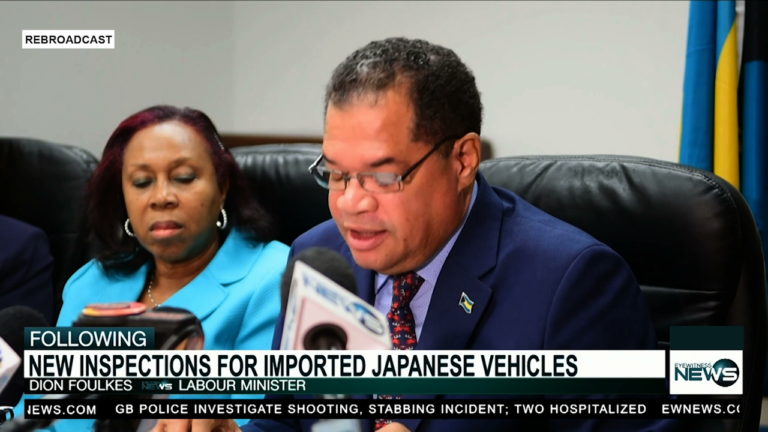A radiation inspection is now mandatory, amongst other requirements
NASSAU, BAHAMAS – More than 17,000 vehicles were imported last year, and nearly 80 per cent of those were from Japan, revealed Labour Minister Dion Foulkes on Monday. The government has therefore partnered with the EAA company in Japan to implement a Pre-Export Verification of Conformity Programme, to ensure that all Japanese vehicles are safe before they are exported to other countries.
One of the new mandatory requirements is a radiation inspection.
“In addition, EAA will also check for steering wheel alignment, breaking force, level of noise, exhaust gas and pipe emissions, horn sound level, brightness of headlamps, engine, cooling system, fuel system, transmission system, final drive system, mileage meter and warning lights,” Foulkes said.
“It is essential to protect The Bahamas from becoming a dumping ground for these vehicles.”
Lionel Albury, President of the Bahamas Motor Dealers Association said in some cases Bahamians end up getting ripped off when they buy these vehicles.
“Odometers are spun back and consumers are not aware, vehicles may have been in an accident and they don’t know,” he said.
“Japan is a country that has snow and they use salt for melting the snow so you get corrosion on the chassis of the vehicle. The inspection process will ensure that consumers are getting value for money.”
If a person purchases a vehicle and it fails inspection, EAA Vice President Lee Siah explained that exporters are aware that there is a requirement and if the vehicle does not pass inspection, it will be rejected with a requirement to either bring it to standard or one must renegotiate with the buyer for a replacement vehicle.
After Monday’s signing, there will be a 90-day period to finalize the implementation process and to educate the public.
The cost of the inspection is $150, which will be paid by the exporters in Japan.
The pilot program will run for one year.


